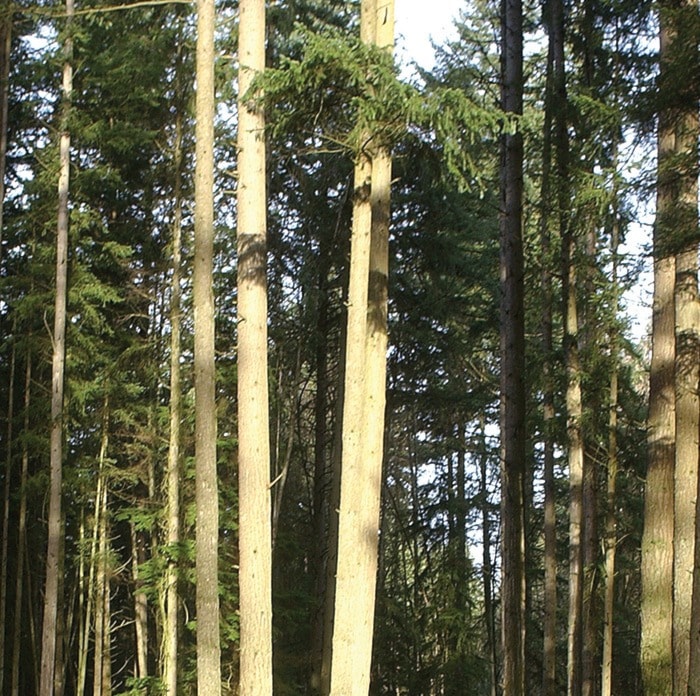National Forestry Week, which this year will be celebrated from Sept. 22-27, challenges Canadians to learn about their forest heritage and to develop an appreciation of all the values of this renewable, natural resource.
It began in 1920 as Forest Fire Prevention Week, when people mistakenly believed that Canada’s forest were limitless and that man-caused fires were the major threat.
Once the fallacy of this misconception was recognized, the title was changed, in 1967.
As the fur trade waned in the 18th and 19th centuries, timber harvesting became the mainstay of B.C.’s economy (by 1926 it supplied almost a quarter of all Canada’s exports and half of the nation’s lumber) and it’s still an important element making up 35 per cent of the value of exports in 2013.
From those early days when ‘forestry’ meant felling and processing just the good, easily accessible trees the industry has developed into a modern, science-based, all-encompassing enterprise.
Today’s foresters manage their landscapes for such attributes as cultural significance, ecological diversity, recreation sites and visual quality, stream and watershed protection and wild-life habitat as well as production of wood fibre.
By law, replanting with stock of appropriate size and species must follow harvesting so that the forests remain.
Depending on size and quality, trees will be processed into computer-directed lumber of many possible dimensions, paper and pulp, plywood or its several derivatives.
Wood waste that cannot be used is burned as fuel.
One of the problems in understanding forestry is grasping the time-scale involved. It’s perhaps not overly cynical to assert that most politicians think in terms of the next election; employees look to the next wage packet or paycheque; CEOs and directors focus on the next quarterly report’ and shareholders look to their annual dividends. Meanwhile, trees, the basis for all these considerations, take many decades to reach maturity and need protection as they grow. It’s a real challenge to reconcile these differing time-frames.
Locally, you can begin to grasp this problem by visiting Sunnyside Acres Urban Forest.
The Semiahmoo Peninsula was logged at the end of the 19th century and into the 20th; some clearing was carried out and brush was burned off until the mid-’20s; after that it was largely left alone.
On this site, natural recovery begins with herbaceous plants and shrubs which are soon supplanted by relatively short-lived, deciduous tree species – alder, birch and poplar. As they age and decline, their place is taken by coniferous Douglas-fir, hemlock and western red cedar on the drier portion and, more slowly, by western red cedar where the ground is wetter.
The conifers in Sunnyside are now about 80 years old , an age that ties in well with the known history. Residual cedar stumps are still to be seen, thanks to aromatic oils in the wood which serve as a preservative, but the Douglas-fir and hemlock stumps have long since rotted away.
This forest, dedicated in 1988, is a readily accessible example of natural recovery and progression, and it’s right here on the doorstep, waiting for you.
Dr. Roy Strang writes monthly on the environment for the Peace Arch News. rmstrang@shaw.ca
